
There are few countries as close to the UK that offer such a formidable selection of coastal holiday destinations and city break hotspots like Turkey, all with their own distinct and eccentric collection of history, cuisine and culture.
You will find many pockets of Turkey that have warm weather in both summer and winter, while the more than 700,000sq miles of land that make up this transcontinental country present an abundance of buoyant party resorts, beautiful coastlines and historic cities teeming with ancient landmarks and breathtaking architecture.
It’s no secret that Turkey is an excellent holiday destination, from families seeking action-packed resorts to secluded adults-only getaways for couples. But what may slip the mind is the multitude of culture and history on show within its cities and towns, a surprising number of which will keep you busy over a weekend or even longer.
The large, bustling of Istanbul is a go-to for the first taste of the country, with its high-octane way of life and excellent range of sights to see, providing a memorable introduction to Turkish culture.
In Turkey’s southwest, the Turquoise Coast – also known as the Turkish Riviera – is home to cities such as Bodrum and Antalya. They combine distinct heritage with striking coastal beauty, the perfect spots to visit during a beach holiday. Meanwhile, in the capital, Ankara, a vibrant energy attracts both Turkish and overseas visitors.
In a country so large and blessed with captivating destinations, it can be difficult to know where to begin. With that in mind, we’ve rounded up the best cities in Turkey to help you plan your next adventure, along with a recommendation on where to stay.
Best towns and cities to visit in Turkey
1. Istanbul
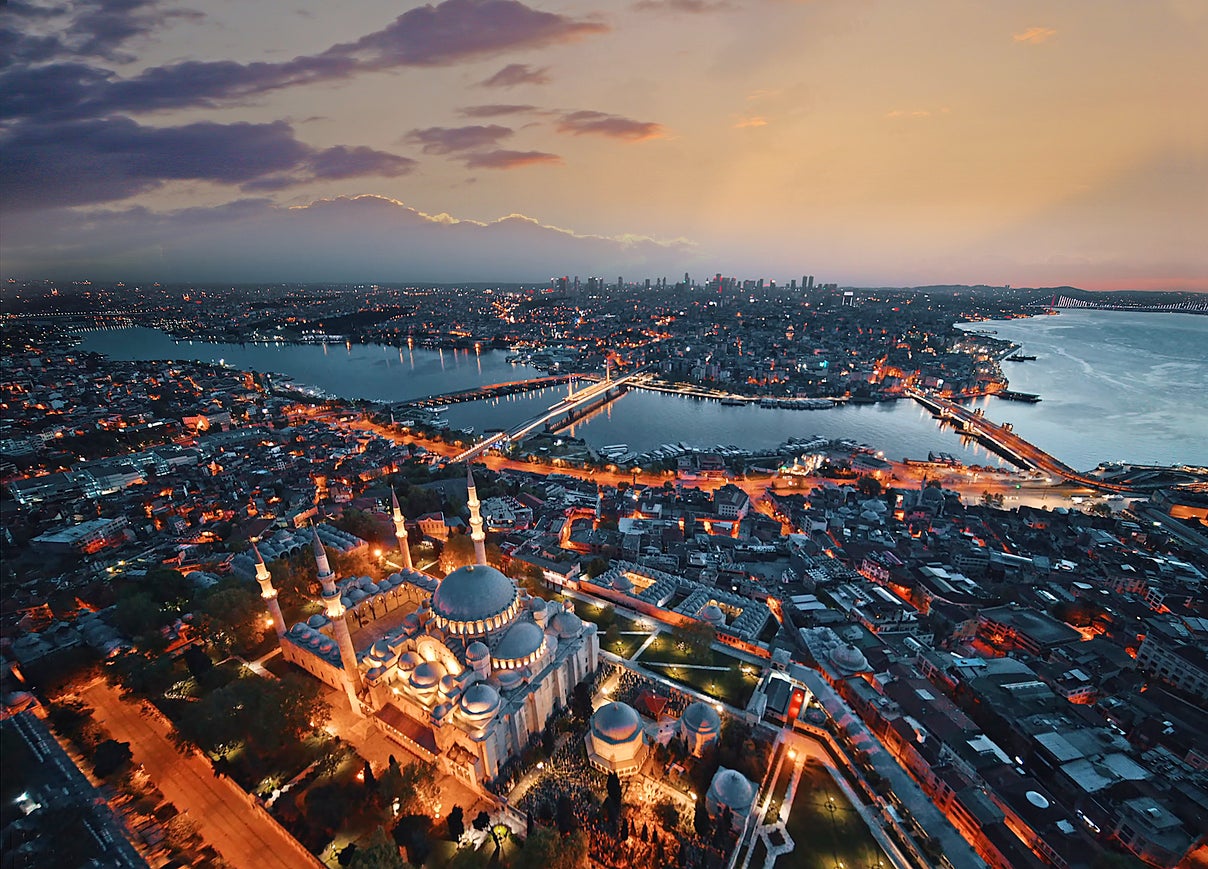
With a population of around 16 million people, Istanbul is a city that seemingly never sleeps. Bisected by the emerald waters of the Bosphorus Strait (which you can tour by boat for marvellous views), this is the place where two continents meet, and this fusion of distinct cultures has created a vibrant city whose energetic way of life often borders on chaotic.
A city steeped in the history of both Europe and Asia, Istanbul has been the home of three different empires over almost three millennia, and today still preserves some remnants of these vastly different cultures. Ottoman and Byzantine influences dominate, particularly in the Sultanahmet district, home to many of the city’s must-see sights.
Prime among these are the Blue Mosque, with its towering minarets, and the Hagia Sophia, a mosque that was originally constructed as a church, reflecting the changing influences that the city has been subject to. Topkapi Palace and the Basilica Cistern are the district’s other main attractions, though it pays to explore further afield in areas like Balat, originally the city’s Greek Orthodox and Armenian neighbourhood, and Fener.
For a more contemporary taste of Istanbul, Arnavutköy is the heart of the city’s nightlife scene, while SALT Beyoğlu hosts art exhibitions and film screenings.
For a stay in the Beyoğlu district close to the hubbub of the city centre, Pera Palace's opulent decor makes for a glamorous stay with a convenient location. The hotel is also home to a pool, a spa and a sought-after afternoon tea experience featuring Turkish delicacies to French bakes.
Read more: Delve deeper into Izmir’s surprising and growing fine-dining scene
2. Antalya
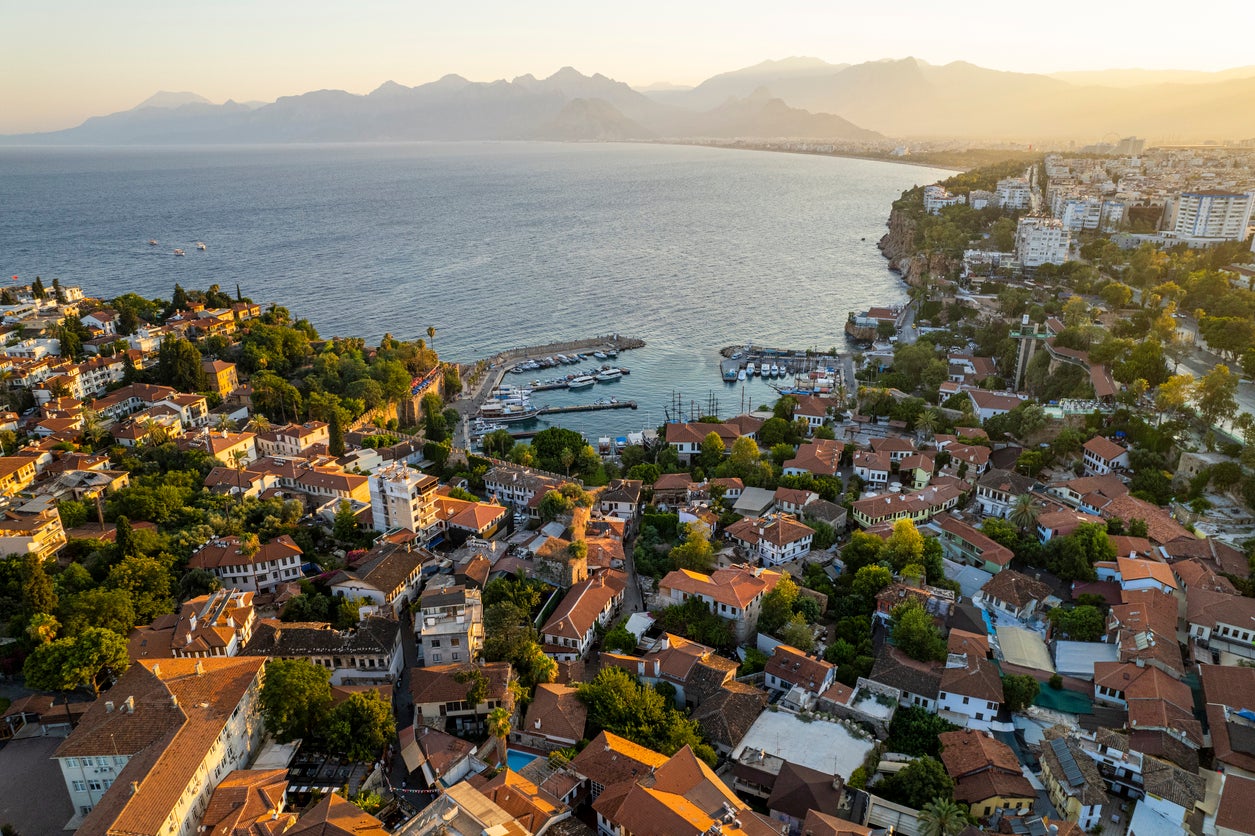
Most years, Antalya competes with Istanbul for the title of ‘most visited Turkish city’. Though just a fraction of the size, Antalya, the capital of the country’s Turquoise Coast, punches above its weight in the tourism stakes thanks to a characterful old town, a beautiful harbour and dozens of beautiful surrounding beaches.
Some of the best nearby beaches include Cirali, Konyaalti and Patara, and while many choose to stay in one of the various beachfront resorts that populate the surrounding coastline, exploring Antalya itself is certainly worth leaving your sun lounger for.
Its charming old town, known as Kaleiçi, consists of labyrinthine streets housing a series of mosques, ancient walls, russet-roofed stone buildings and parks that attest to the influence of Ottoman culture and architecture. These narrow alleys snake down to the equally idyllic harbour, where a slew of cafes and restaurants welcome revellers throughout the day and night.
If you want to couple your city break with a beach holiday, a favourite choice among visitors is the Lara Barut Collection, a luxurious resort offering suites, swim-up rooms, family spaces, penthouses and standard rooms. When not exploring the old town, guests can make use of its cabanas on the private beach, nine outdoor pools and aqua park to cool off in the summer sun.
Read more: The winter sun escape perfect for family wellness this winter
3. Bodrum
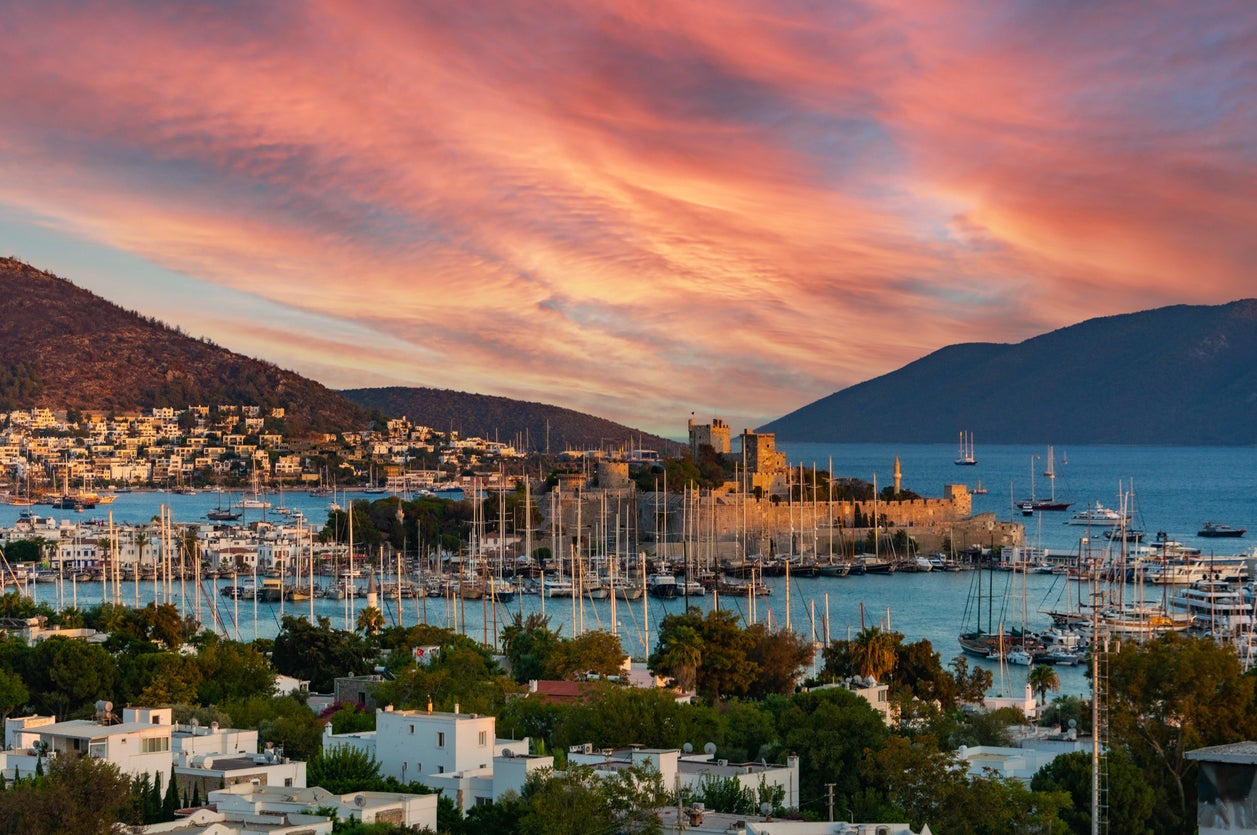
Bodrum is best known as an ideal spot for a Turkish summer holiday. Set among rolling green hills, it has an enviable coastal location, pristine beaches like Yahsi and Aspat, a variety of tourist sites and lively nightlife for those who seek it.
A range of resorts, from the dazzling high-end to the more affordable and family-friendly, cater to all sorts of tourists, whether you’re looking for parties on the marina or want to delve into the region’s history. There’s plenty of Bodrum’s past to explore; once known as Halicarnassus, it still contains a mausoleum, ancient ruins, a Roman theatre and the 700-year-old Bodrum Castle.
Like any coastal tourist city, there’s plenty more to see and do in Bodrum away from ruins and sun loungers. Scuba diving is a popular activity in nearby Gokova Bay, while boat trips around the peninsula or the Dalyan River are a good way to spend an afternoon, as is wine tasting at Karnas Vineyards. The town’s proximity to Kos means that tourists and locals alike will often spend the day in Greece too.
There are plenty of resorts around the seafront catering to families but if you would prefer a more secluded, adults-only stay, look no further than the Marmara Bodrum. Sitting on a hill, providing views of the city, the hotel has luxury rooms and suites, a shuttle to the beach and the Michelin-recommended restaurant, Tutu, serving flavours from around the Aegean.
Read more: The resort town where you can find Maldives-like winter sun closer to home
4. Ankara
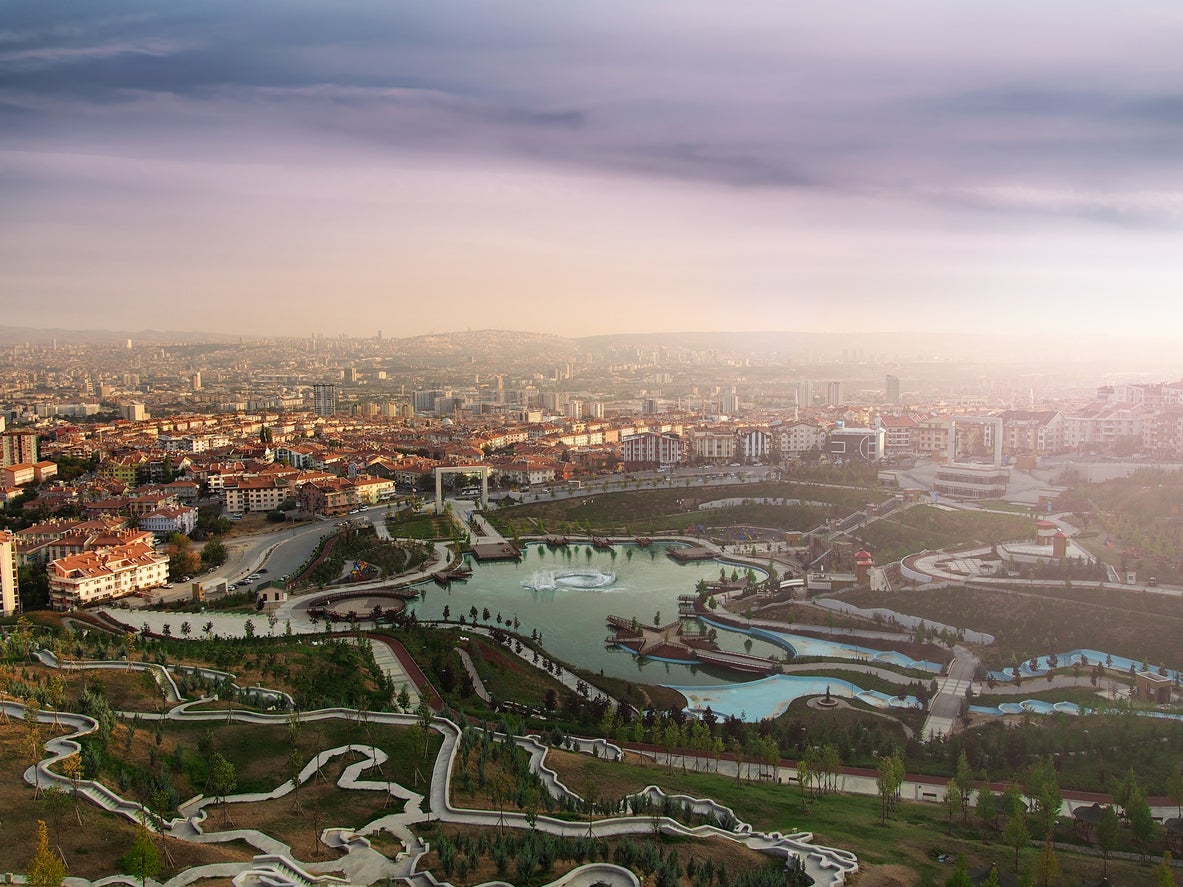
Turkey’s capital city may be overshadowed by world-renowned Istanbul, but Ankara offers visitors an experience of Turkey’s ‘other’ side, away from chaotic cities and party-centric coastal resorts. This is a youthful, exciting city that fuses the old and the new. It is fuelled by its relatively new status as a major city, and vibrant modern areas such as studenty Kizilay and more upmarket Kavaklidere.
But Ankara has been careful not to forget its past. High above the city sits the Anit Kabir, the vast mausoleum of the father of modern Turkey, Mustafa Kemal Atatürk, who led the War of Independence and bestowed the city’s status as capital. Down below in Hisar, Roman monuments like those at Ulus sit alongside Byzantine citadel walls that enclose Ottoman-era mini villages. The Museum of Anatolian Civilizations and the Museum of the War of Independence are two more historical highlights, while the parks of Kugulu and Genclik provide some much-needed green space.
Located near the centre of Ankara is Divan Çukurhan, a boutique place to stay with a historic charm just steps away from the Ankara Citadel. The hotel offers twin bedrooms up to a two-bedroom suite, each individually decorated from silk drapes over king beds to modern designs.
Read more: Turkey's best-kept secret lies in its northeast playground of perfect snow
5. Izmir
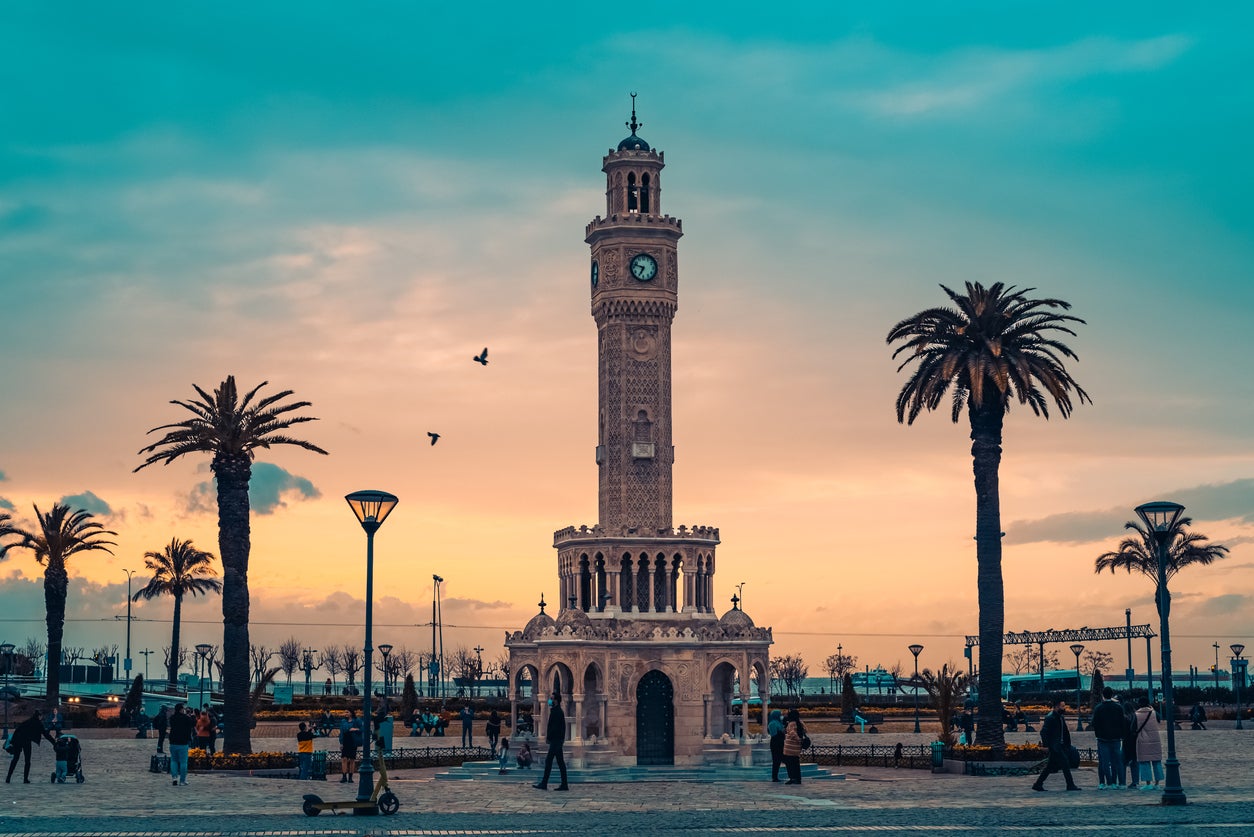
Izmir is sometimes overlooked in favour of nearby Bodrum or Marmaris, but Turkey’s third largest city is home to plenty of arts, culture and a rich heritage, as well as the idyllic coastal resorts of Cesme, Alacati and Urla.
While the city’s past was characterised by activity around the Bay of Izmir, Konak Pier and the impressive city promenade (known as Kordon), the modern-day symbol of the city is its 20th-century Clock Tower.
It is located in the middle of Konak Square, in the district of the same name, which is also the gateway of the maze-like 17th-century Kemeralti Market. This Turkish bazaar stretches across the city into the Roman agora, with the ancient Kadifekale fort being the other main historic site.
Found just opposite the port in central Izmir is Swissotel Buyuk Efes Izmir, a five-star hotel that is located within walking distance from some of the city’s main attractions. The hotel has 402 rooms, while the on-site spa and fitness centre includes a Turkish bath, swimming pools and relaxation areas.
Read more: The best Turkey holiday destinations – and when to travel to each one
6. Edirne
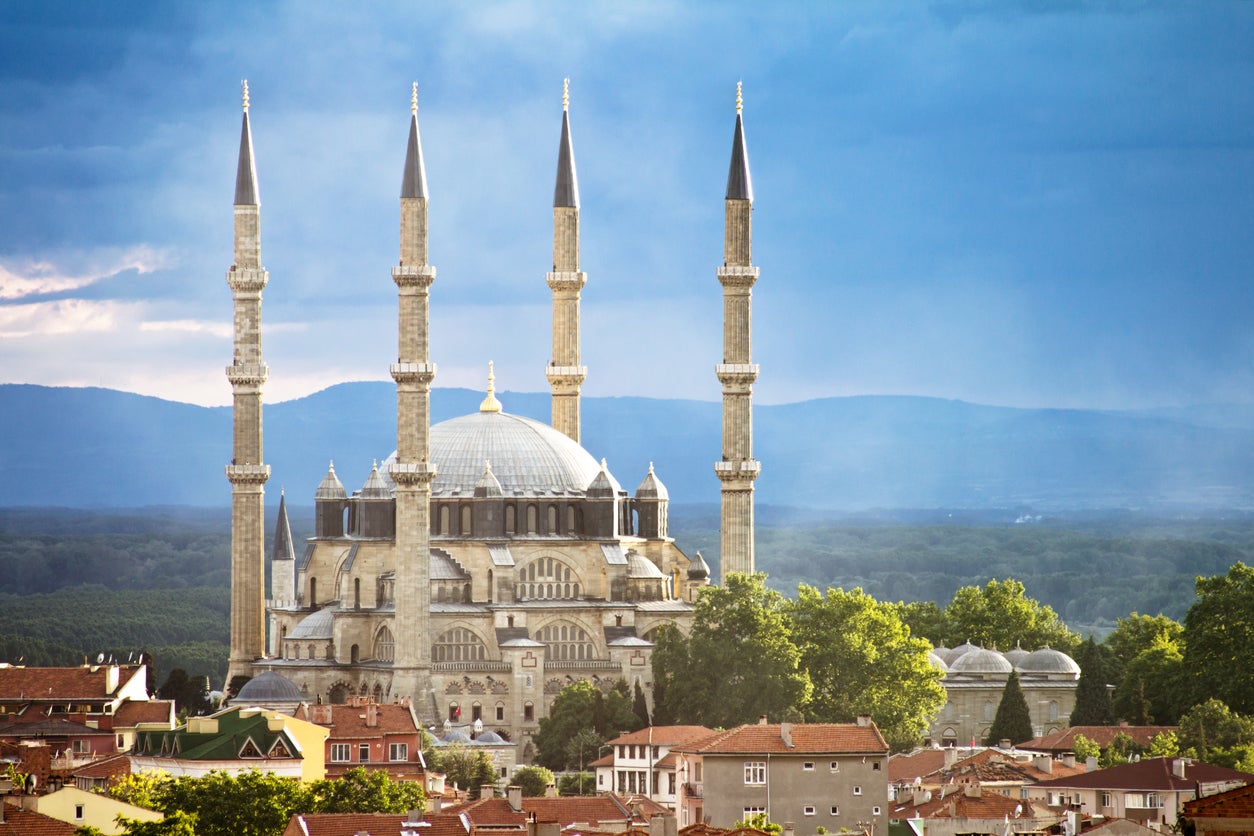
Located on the border with Greece and Bulgaria, Edirne is a city with a more European feel than other Turkish counterparts, but one whose architecture, mosques, bazaars and palace provide a constant reminder that you are in a former Ottoman capital.
Edirne sits along the banks of both the Maritza and Tunca rivers, surrounded by verdant plains and with much of the same white-washed, russet-roofed building styles as Antalya. The city’s main landmark is the 16th-century Selimiye Mosque, an impressive Unesco-listed structure that has become a symbol of Edirne. Other mosques, such as Muradiye, Old Mosque and the Sultan Beyezid II Complex, adorn the city skyline, while a series of bridges over the Tunca also hark back to Ottoman times, and provide a base for summer relaxation and mild swims.
For an affordable stay in the city, Alan Suites provides comfortable rooms to make a base while exploring Edirne. While they are on the simple side in terms of decoration, they include all the essentials for a city break, such as an in-room sitting area, wardrobe and mini bar, while a buffet breakfast and on-site eatery makes it easy to grab a bite to eat.
Read more: The many Turkish delights to discover in Turkey
7. Marmaris
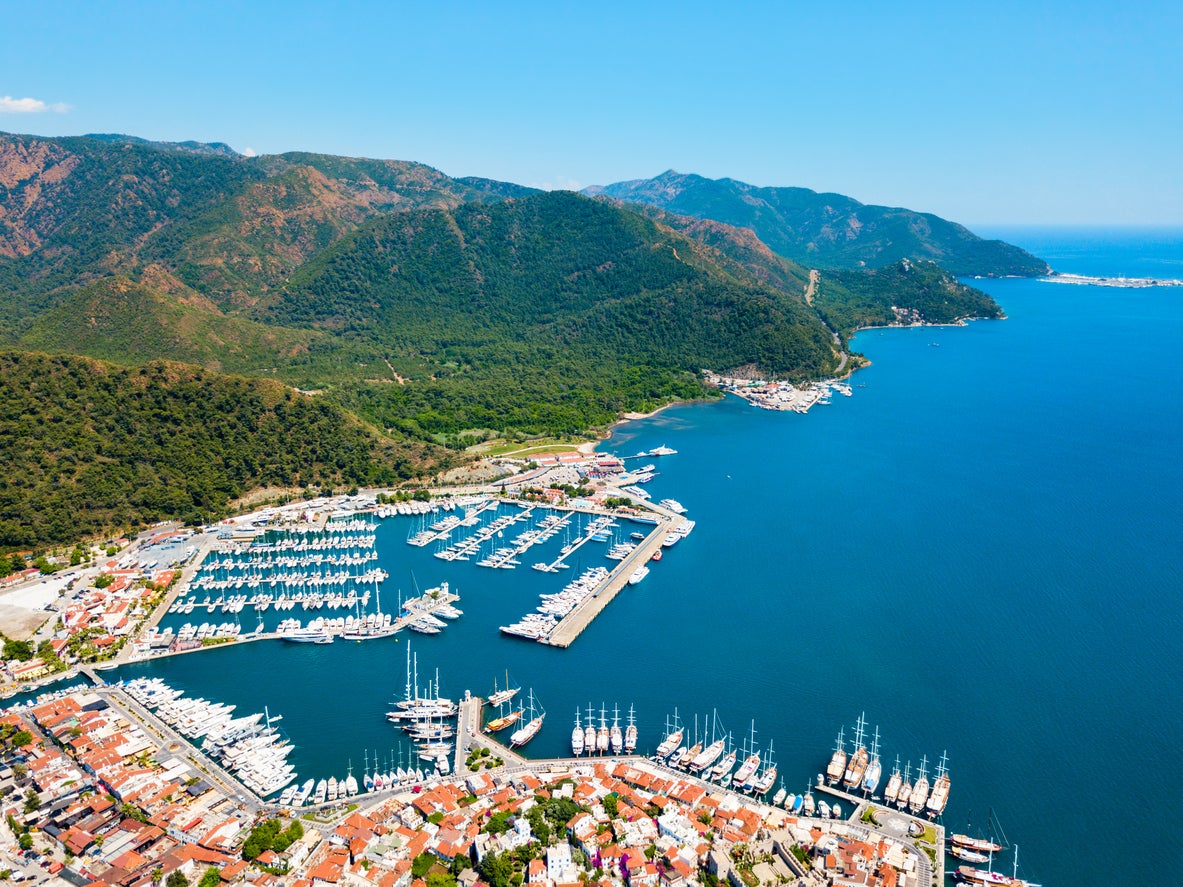
Marmaris is a popular coastal town, welcoming thousands of tourists every summer despite its modest size. It benefits from a striking location on the Aegean Sea and is surrounded by dense forest and towering hills, with a coastline that is home to golden sand lapped by azure waters along beaches like Urban or Long Beach.
Like Antalya, the town begins in its yacht-filled marina, with a maze of narrow streets slowly snaking back into the old town, itself a sea of red roofs and white-washed buildings. Marmaris Castle, the museum, the bazaar and Jinan Gardens are worth exploring to take in history, a spot of shopping and a pleasant stroll, before ending the day on aptly named Bar Street, the centre of the city’s often raucous nightlife.
If you are visiting this beachside destination for a holiday by the sands, there are plenty of resorts lining the coast that are on offer. Overlooking the bay is Tui Blue Grand Azur, a five-star resort that offers all-inclusive packages alongside its four pools, beach access and spa treatment rooms.
FAQs
When is the best time to visit Turkey?
June and September are the most pleasant times to visit Istanbul. Average highs will hover around 27C and 25C respectively, while you’ll avoid the peak summer crowds – perfect for enjoyable sightseeing and al fresco dining.
Bodrum can be sweltering in the summer, with average daily highs hitting around 35C in July and August. With average temperatures of 20C and very few crowds (apart from at half-term), October can be a good choice for a more affordable trip to the southern resort.
Antalya is another place where summer highs can reach over 35C, so July and August are best avoided. While rainfall starts to climb again in September, average temperatures will stay around a much more manageable 26C.
In Izmir, June and September carry average daily temperatures between 24C and 26C. Alternatively, for a better mix of cooler (but still pleasant) temperatures (think 18-19C on average) and far fewer crowds, visit in May or October.
Ankara will reach its maximum temperature between June and September, reaching highs of 32C in August. Quieter months will fall from November to March, but the weather may not be as warm, however, this does have the benefit of being able to stomp around the city without getting too hot.
The coastal town of Marmaris can get especially hot in the summer, peaking at 36C in July for its summer holiday peak season. However, temperatures stay relatively warm throughout the year, with highs of 16C in January and 17C in December.
Edirne is a lot cheaper and quieter in the winter months but temperatures can drop to 0C; summer temperatures can shoot up to 32C in peak season.
What currency do I need?
Turkey uses the Turkish lira.
Read more: Istanbul city guide - where to stay, eat, drink and shop in Turkey’s hub of culture and history
What can you suggest to get this show on the Rhodes?
Delve deeper into Izmir’s surprising and growing fine-dining scene
The winter sun escape perfect for family wellness this winter
The resort town where you can find Maldives-like winter sun closer to home
Turkey's best-kept secret lies in its northeast playground of perfect snow







